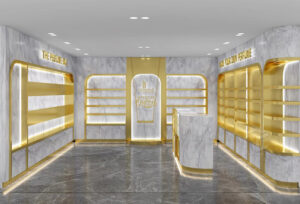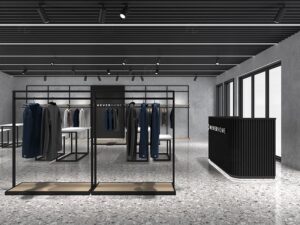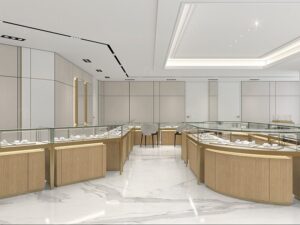
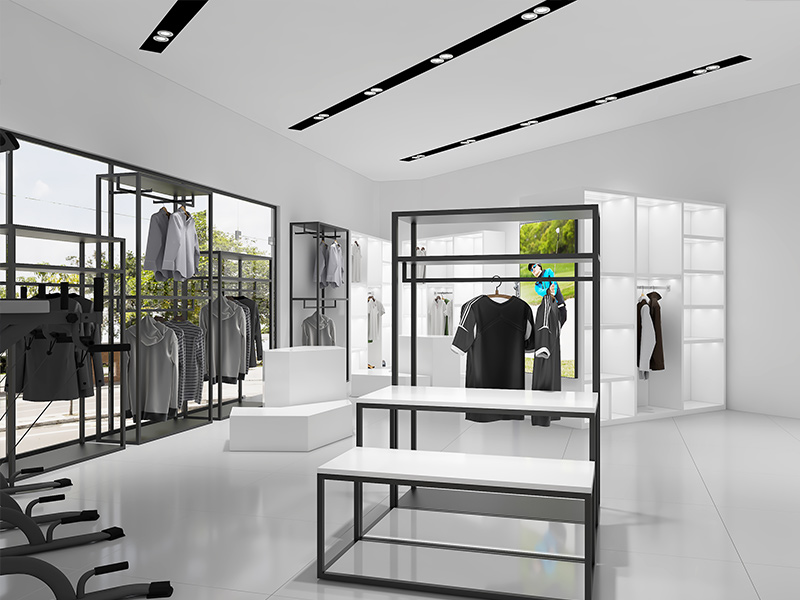
If you own or manage a clothing store, you know how important it is to create a visually appealing and functional retail space that attracts and engages your customers. Your store layout and fixtures are not just a way to display your products, but also a way to communicate your brand identity, showcase your value proposition, and influence your customers’ behavior and purchasing decisions.
In this ultimate guide, we will show you how to design an attractive clothing store layout that wows your customers and boosts your sales. We will cover the following topics:
- What are the benefits of having an attractive clothing store layout?
- What are the best practices for choosing and arranging your fixtures?
- What are the different types of store layouts and how to choose the best one for your clothing store?
- How to use color, lighting, signage, and interactive features to enhance your store layout and customer experience?
By the end of this guide, you will have a clear understanding of how to create a clothing store layout that works for your brand, your products, and your customers. Let’s get started!
Store Fixtures Manufacturer
Over 24 years experience
Free Shop Design
Support 2D/3D custom design
I/E Trading
Market Cover 100+ Countries
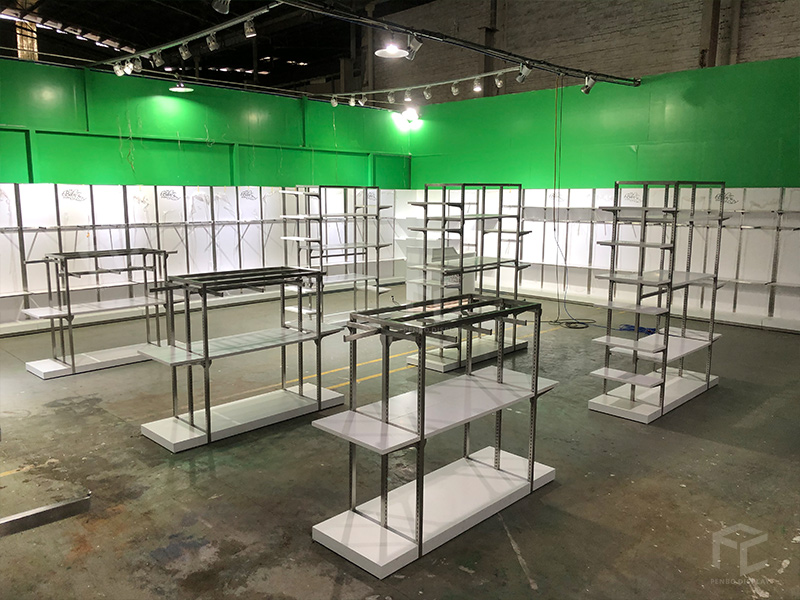
What are the benefits of having an attractive clothing store layout?
Your clothing store layout is more than just a way to organize your products. It is also a powerful tool to create a positive impression on your customers and influence their shopping behavior. Here are some of the benefits of having an attractive clothing store layout:
- It enhances your brand image and identity. Your layout reflects your brand personality, values, and style. It helps you stand out and attract your target customers. For example, a modern and minimalist layout suits trendy clothing, while a rustic and cozy layout suits vintage clothing.
- It showcases your value proposition and product quality. Your layout helps you highlight your best and most profitable products, and your unique selling points. It helps you display your products in a way that shows their features, benefits, and quality. For example, a spacious and elegant layout suits luxury clothing, while a compact and efficient layout suits affordable clothing.
- It improves your customer experience and satisfaction. Your layout helps you create a comfortable and enjoyable shopping environment. It helps you optimize your traffic flow, product visibility, and accessibility. It also helps you provide additional services and features, such as fitting rooms, mirrors, seating areas, music, and interactive displays. For example, a dynamic and energetic layout suits sportswear, while a professional and sophisticated layout suits formal clothing.
- It increases your sales and profitability. Your layout helps you influence your customers’ buying behavior and decision-making process. It helps you encourage impulse purchases, cross-selling, and upselling. It also helps you reduce your inventory costs, shrinkage, and maintenance expenses. For example, a flexible and adaptable layout suits seasonal clothing, while a stable and durable layout suits classic clothing. As you can see, an attractive store layout can bring you many benefits and advantages. But how do you design a store layout that works for your store?
As you can see, having an attractive clothing store layout can bring you many benefits and advantages. But how do you design a store layout that works for your clothing store?
What are the best practices for choosing and arranging your fixtures?
Your fixtures are the essential elements of your store layout. They are the furniture, shelves, racks, hangers, hooks, bins, baskets, tables, counters, cabinets, and other items that you use to display and store your products. Choosing and arranging your fixtures can be a challenging task, as you need to consider many factors, such as your store size, shape, location, budget, theme, style, product type, quantity, variety, and customer profile. Here are some best practices for choosing and arranging your fixtures:
- Choose fixtures that match your brand identity and product quality. Your fixtures should reflect your brand personality, values, and style, as well as your product features, benefits, and quality. For example, if you sell eco-friendly and organic clothing, you can choose fixtures made of natural and recycled materials, such as bamboo, wood, metal, or cardboard. If you sell innovative and futuristic clothing, you can choose fixtures made of synthetic and high-tech materials, such as plastic, glass, or LED.
- Choose fixtures that suit your store layout and product visibility. Your fixtures should fit your store layout and optimize your product visibility and accessibility. For example, if you have a small and narrow store, you can choose fixtures that are compact and vertical, such as wall-mounted shelves, racks, or hooks. If you have a large and spacious store, you can choose fixtures that are expansive and horizontal, such as floor-standing shelves, tables, or bins.
- Choose clothing store fixtures that are functional and flexible. Your fixtures should be functional and flexible, meaning that they should serve multiple purposes and adapt to different situations. For example, you can choose fixtures that have wheels, hinges, or drawers, so that you can move, fold, or store them easily. You can also choose fixtures that have adjustable heights, widths, or angles, so that you can change their positions or orientations according to your needs.
- Arrange fixtures according to your traffic flow and product hierarchy. Your fixtures should be arranged according to your traffic flow and product hierarchy, meaning that they should guide your customers through your store and highlight your most important products. For example, you can arrange your fixtures in a circular, grid, or free-flow pattern, depending on your store layout and customer behavior. You can also arrange your fixtures in a focal point, pyramid, or waterfall display, depending on your product type, quantity, and variety.
By following these best practices, you can choose and arrange your fixtures in a way that enhances your store layout and customer experience.
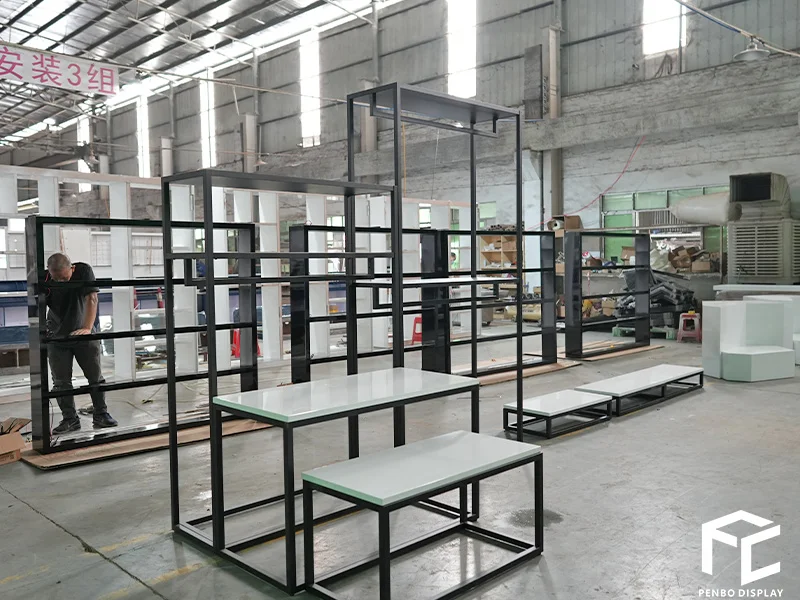
What are the different types of store layouts and how to choose the best one for your clothing store?
Your store layout is the overall arrangement of your fixtures, aisles, and spaces in your store. It determines how your customers navigate, browse, and shop in your store. There are different types of store layouts, each with its own advantages and disadvantages. Here are some of the most common store layouts and how to choose the best one for your clothing store:
- Circular layout. A circular layout is a store layout that has a circular or oval shape, with a central focal point and fixtures arranged around it. This layout creates a smooth and continuous traffic flow, as customers can easily move around the store and see all the products. It also creates a sense of spaciousness and openness, as customers can see the entire store from any point. A circular layout is suitable for clothing stores that have a large and diverse product assortment, as well as a high customer volume. For example, a department store or a mall can use a circular layout to display different categories and brands of clothing.
- Grid layout. A grid layout is a store layout that has a rectangular or square shape, with fixtures arranged in parallel rows and columns. This layout creates a clear and organized traffic flow, as customers can follow a straight and logical path through the store. It also creates a sense of efficiency and convenience, as customers can easily find and compare products. A grid layout is suitable for clothing stores that have a small and uniform product assortment, as well as a low customer volume. For example, a supermarket or a discount store can use a grid layout to display similar types and styles of clothing.
- Free-flow layout. A free-flow layout is a store layout that has an irregular or asymmetrical shape, with fixtures arranged in a random or creative way. This layout creates a flexible and dynamic traffic flow, as customers can explore and discover products in different ways. It also creates a sense of excitement and uniqueness, as customers can encounter unexpected and surprising products. A free-flow layout is suitable for clothing stores that have a medium and varied product assortment, as well as a moderate customer volume. For example, a boutique or a specialty store can use a free-flow layout to display different themes and trends of clothing.
To choose the best store layout for your clothing store, you need to consider your store objectives, product characteristics, customer preferences, and competitive advantages. You can also combine different types of store layouts to create a hybrid layout that suits your specific needs. For example, you can use a circular layout for your main floor, a grid layout for your clearance section, and a free-flow layout for your new arrivals section. The key is to create a store layout that matches your brand identity, product quality, and customer experience.
How to use color, lighting, signage, and interactive features to enhance your store layout and customer experience?
Your store layout is not only about your fixtures, but also about your color, lighting, signage, and interactive features. These are the elements that add life and personality to your store layout, as well as create a mood and atmosphere for your customers. Here are some tips on how to use color, lighting, signage, and interactive features to enhance your store layout and customer experience:
- Use color to create contrast and harmony. Color is one of the most powerful tools to attract and influence your customers. You can use color to create contrast and harmony in your store layout, depending on your desired effect. For example, you can use bright and bold colors to create contrast and draw attention to your products, such as red, yellow, or orange. You can also use soft and subtle colors to create harmony and calmness in your store layout, such as blue, green, or purple.
- Use lighting to create focus and ambiance. Lighting is another important tool to enhance and influence your customers. You can use lighting to create focus and ambiance in your store layout, depending on your desired effect. For example, you can use bright and direct lighting to create focus and clarity in your store layout, such as spotlights, track lights, or recessed lights. You can also use dim and indirect lighting to create ambiance and coziness in your store layout, such as lamps, candles, or fairy lights.
- Use signage to create information and direction. Signage is another essential tool to communicate and guide your customers. You can use signage to create information and direction in your store layout, depending on your desired effect. For example, you can use large and clear signage to create information and awareness in your store layout, such as banners, posters, or billboards. You can also use small and simple signage to create direction and navigation in your store layout, such as labels, tags, or arrows.
- Use interactive features to create engagement and fun. Interactive features are another innovative tool to engage and delight your customers. You can use interactive features to create engagement and fun in your store layout, depending on your desired effect. For example, you can use digital and touch-screen features to create engagement and interactivity in your store layout, such as tablets, kiosks, or smart mirrors. You can also use physical and sensory features to create fun and excitement in your store layout, such as mannequins, music, or fragrance.
By using color, lighting, signage, and interactive features, you can create a store layout that appeals to your customers’ senses and emotions, as well as enhances your brand image and product quality.
Conclusion: Elevating Your Clothing Store Experience
In conclusion, crafting an attractive clothing store layout is a multifaceted endeavor with far-reaching benefits.
Share:
Table of Contents
Shop Fixtures Manufacturer
We are a manufacturer of display products established in 1995 in Guangzhou, China. We specialize in a wide range of retail store fixtures,including display case,showcase,racks,counters,stands , etc. Providing customers with one-stop merchandising solutions.
Recent Posts
Subscribe to Newsletter
Get all the latest information on shop design ideas, sales and offers. Subscribe to the newsletter:
Subscribe to Newsletter
Get all the latest information on shop design ideas, sales and offers. Subscribe to the newsletter:

